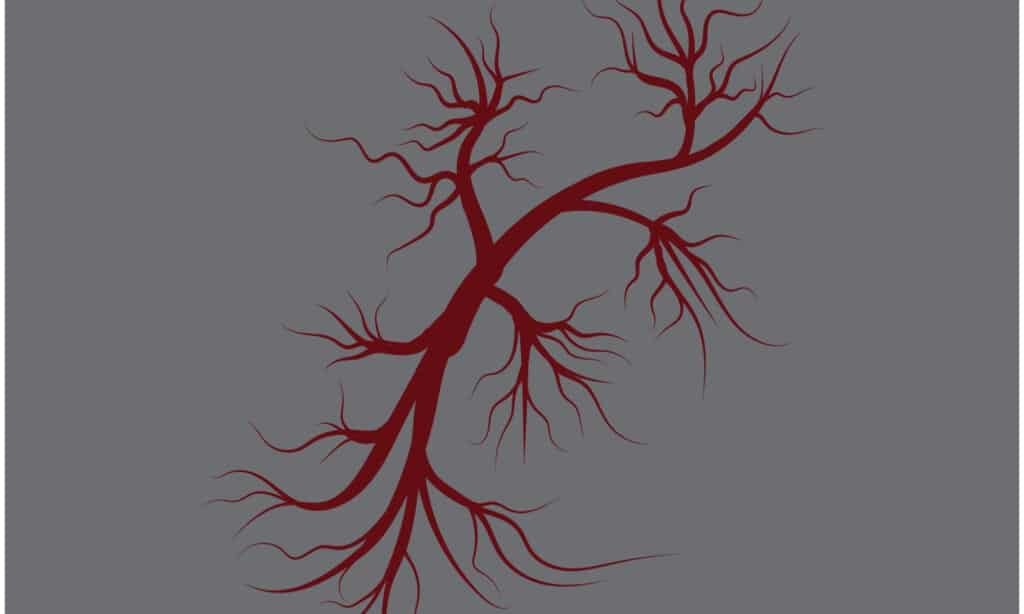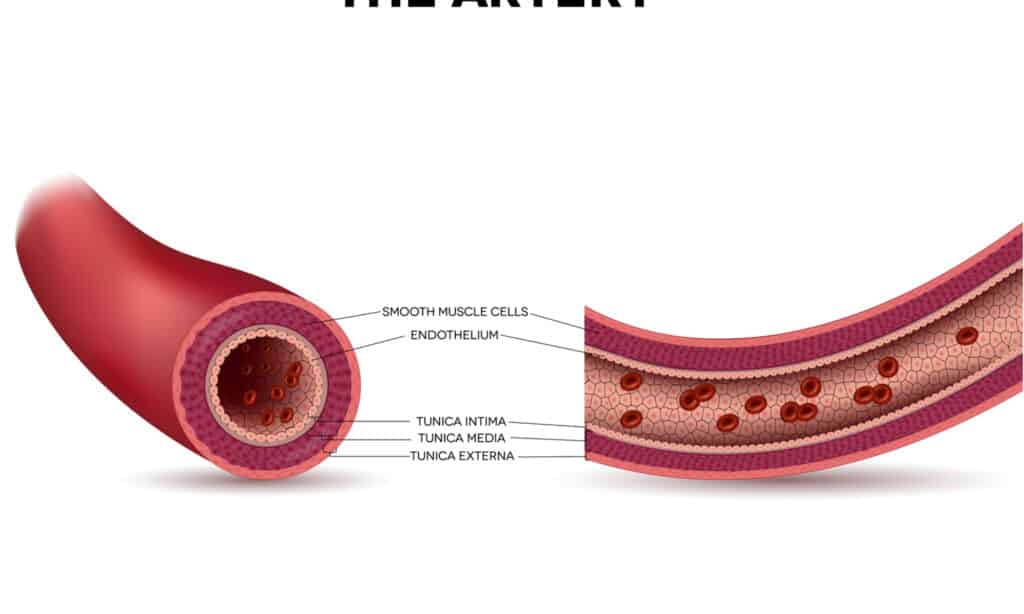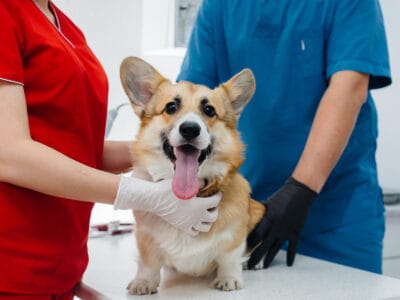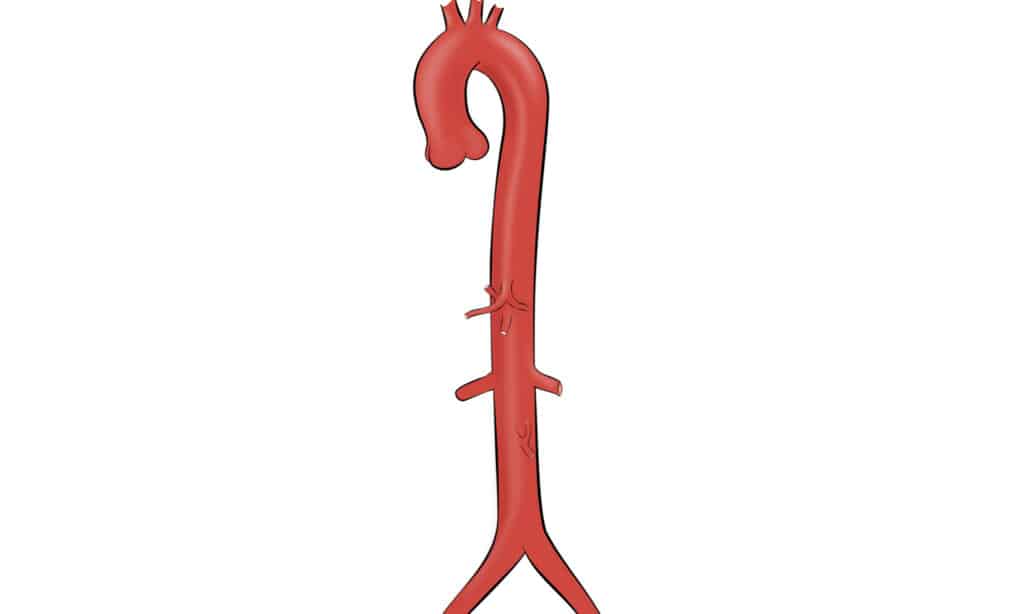Biggest Vein In The Body
The human body requires a steady supply of oxygenated blood to properly function. While arteries ship the oxygenated blood away from the heart and into parts of the trunk, some other system of claret vessels exists to motion deoxygenated blood. These are chosen veins. Today, nosotros're going to expect at the structure and office of veins while we likewise identify and explore the largest vein in the torso.
Past the time we're finished, you'll take a skillful thought of how veins work in our torso.
What is a Vein?

Heartlive/Shutterstock.com
Generally speaking, a vein is a type of claret vessel that carries deoxygenated blood to the centre. Some exceptions to this rule exist, such as umbilical veins and pulmonary veins. These types of veins carry oxygenated blood to the centre. Veins are found in humans and many other animals akin.
Unlike arteries that are muscular and tend to run deep in the man body, veins are insufficiently superficial and thinner than arteries. Let'due south look a piddling closer at veins by identifying the anatomy and function of veins.
The Anatomy of a Vein

Tefi/Shutterstock.com

At first glance, the anatomy of a vein is very similar to that of an artery. The vein walls take three layers just similar arteries, and they are the same ones including:
- Tunica externa: the outermost layer of the vein walls, composed of connective tissue but less than that of arteries. This is the thickest layer of the vein and also contains vasa vasorum.
- Tunica media: the middle layer of the vein that is made of polish muscle tissue.
- Tunica intima: the portion of the vein that comes into contact with the blood flowing through it, made of endothelial cells.
- Lumen: the hollow portion of veins and arteries through which blood flows.
A major departure between veins and arteries is that veins are generally thinner, but they have a wider lumen than arteries.
Other differences include that veins generally catamenia away from the heart, are not rounded like arteries, transport blood at low pressure level, and have valves that maintain a single management of menstruum. Arteries exercise not possess such valves at all.
The presence of valves is incredibly important in the extremities of the body where blood menses is slower and more susceptible to the forces of gravity. The valves in veins prevent the backflow of blood.
The unique qualities of veins make information technology like shooting fish in a barrel to distinguish them from arteries. Nonetheless, it's important to note that at that place are several types of veins.
Types of Veins
Several types of veins exist in the torso. They have unique functions or locations that gear up them apart from the others. Permit'southward take a quick look at how some of these veins are classified.
Mostly speaking, nosotros can break down 4 types of veins into two dichotomies. These are not the only types of veins that exist, and we are but going to give a basic overview of their functions.
Superficial Veins vs Deep Veins
Superficial veins are the veins closest to the surface of the torso, and those are easily seen in humans' hands. Deep veins are those that are located deep in the body and interact with arteries.
Pulmonary Veins vs Systemic Veins
The pulmonary veins are those that bring oxygenated claret from the lungs and into the heart. Systemic veins are those that carry deoxygenated blood from tissues throughout the body back to the centre. There, information technology enters the pulmonary excursion so that it can be oxygenated. The majority of the veins in a human's body are systemic.
Other types of veins, like perforator veins or communicating veins, exist. However, the brief overview that we've provided should give you enough
What is the Largest Vein in the Body?
The largest vein in the human being torso is the junior vena cava. The inferior vena cava measures upwards of 3 cm in diameter depending on the individual and about 22 cm in length. Every bit you might imagine, the inferior vena cava is located close to the center where many of the other largest blood vessels are located.
The inferior vena cava is i of two very large veins that return blood to the heart. The other one is chosen the superior vena cava. Despite their names seemingly hinting at their size, the names are actually derived from their anatomical positions in the body. Superior is located above and the junior is located below relative to the middle.
Meanwhile, the superior vena cava, the superior portion of the venae cavae, has a diameter of ii.4 cm and measures merely nearly 7 cm long. That makes information technology slightly smaller in bore than the junior vena cava and much shorter.
The chore of the largest vein in the body is to return deoxygenated claret to the centre. The veins attain this by emptying the deoxygenated claret into the right atrium of the heart.
The fact that these two veins are this large is interesting because veins tend to exist smaller than arteries on the whole. Also, the size of the venae cavae all but ensures that no other veins could match them for size. That means few other veins have the diameter of these two.
What is an Artery?

pirke/Shutterstock.com
Arteries are thicker, more muscular blood vessels with a smaller lumen relative to veins. These blood vessels are tasked with carrying oxygenated blood from the heart to various parts of the body.
Arteries carry blood under pressure, and they lack the valves that we see in veins. These vessels are very important to the torso, and they tin can get quite large. For example, the aorta is the largest artery in the body, and information technology measures most one inch in diameter and measures over 1 foot long. This is much longer than any of the veins present in the human body.
Arteries and veins piece of work in conjunction to deliver oxygenated and deoxygenated blood throughout the trunk. Although they accept numerous similarities at first glance, the 2 types of claret vessels are very distinct from i another when y'all take a closer look.
Biggest Vein In The Body,
Source: https://a-z-animals.com/blog/whats-the-largest-vein-in-the-body/
Posted by: holimansque1965.blogspot.com


0 Response to "Biggest Vein In The Body"
Post a Comment